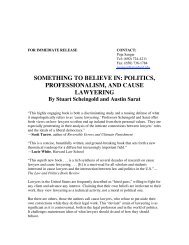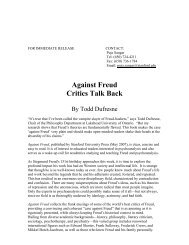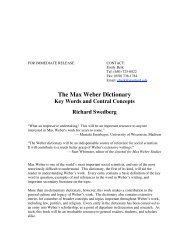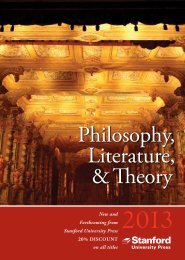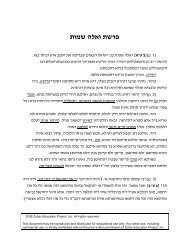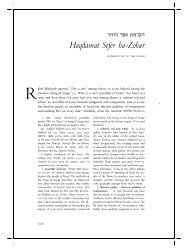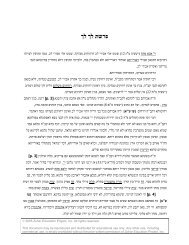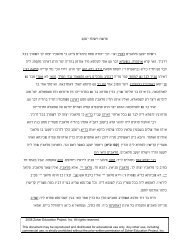Front Matter (PDF) - Stanford University Press
Front Matter (PDF) - Stanford University Press
Front Matter (PDF) - Stanford University Press
You also want an ePaper? Increase the reach of your titles
YUMPU automatically turns print PDFs into web optimized ePapers that Google loves.
elements that seem contradictory to one another. I refer to the speculative/magical<br />
contains<br />
tradition that reached medieval Jewry through the little book<br />
Sefer Yetsirah and various other small texts, mostly magical in content,<br />
called<br />
are associated with it. Sefer Yetsirah has been shown to be a very ancient<br />
that<br />
close in spirit to aspects of Greek esotericism that ¯ourished in the late<br />
work,<br />
era. While the practice associated with this school of thought is<br />
Hellenistic<br />
even including the attempt to make a golem, its chief text<br />
magical/theurgic,<br />
the most abstract worldview to be found within the legacy of ancient<br />
contains<br />
By contemplatingthe core meaningof both numbers and letters, it<br />
Judaism.<br />
toward a notion of cosmic unity that underlies diversity, of an abstract<br />
reaches<br />
that serves as cosmic center, in whom (or perhaps better: ``in which'') all<br />
deity<br />
rooted. The magical praxis is thus a form of imitatio dei, man's<br />
beingis<br />
to reignite the creative spark by which the universe has emerged from<br />
attempt<br />
the Godhead. Here we have the roots of a theology more abstract than<br />
within<br />
be found in the aggadah or the Merkavah tradition, an essentially<br />
anythingto<br />
and nonvisual mysticism.<br />
speculative<br />
Yetsirah was the subject of a wide variety of commentaries in the<br />
Sefer<br />
Ages, rationalists as well as mystics claiming it as their own. In the<br />
Middle<br />
century, the language and style of thought found in this work became<br />
twelfth<br />
to the ®rst generations of kabbalistic writing, as re¯ected by commen-<br />
central<br />
on it and by the penetration of its terminology into other works as well.<br />
taries<br />
must be seen as a dynamic mix of these ®ve elements, sometimes<br />
Kabbalah<br />
one dominating, sometimes adding the mix of another. It was especially<br />
with<br />
®rst and last listed, the aggadic/mythic element and the abstract/specula-<br />
the<br />
tradition that seemed to vie for the leading role in forging the<br />
tive/magical<br />
kabbalistic way of thought.<br />
emerging<br />
esoteric traditions began to reach the small and isolated communities<br />
Jewish<br />
western Europe (some of which dated back to Roman times) perhaps as<br />
of<br />
as the ninth or tenth century. How these ancient materials ®rst came to<br />
early<br />
Jewry is lost in legend, but it is clear from manuscript evi-<br />
Franco-German<br />
that much of the old Merkavah and magical literature was preserved<br />
dence<br />
earliest Ashkenazic Jews, alongwith their devotion to both halakhah<br />
amongthe<br />
aggadah. These esoteric sources were studied especially by groups in the<br />
and<br />
who added to them their own speculations on God, the cosmos,<br />
Rhineland,<br />
the secrets of the Torah. Out of these circles there emerged in the late<br />
and<br />
and early thirteenth century a movement known to history as Ḥasidut<br />
twelfth<br />
a pietistic revivalism based on small communities or brotherhoods of<br />
Ashkenaz,<br />
who committed themselves to high standards of ascetic practice and<br />
mystics<br />
devotion. These groups also played a key role in the preservation<br />
contemplative<br />
and further development of esoteric traditions.<br />
was in the area of southern France called Provence, culturally akin in the<br />
It<br />
Middle Ages to northern Spain, that a somewhat different sort of esoteric<br />
High<br />
Introduction<br />
xxxiii<br />
speculations began to emerge. These came to be called by the name Kabbalah,



